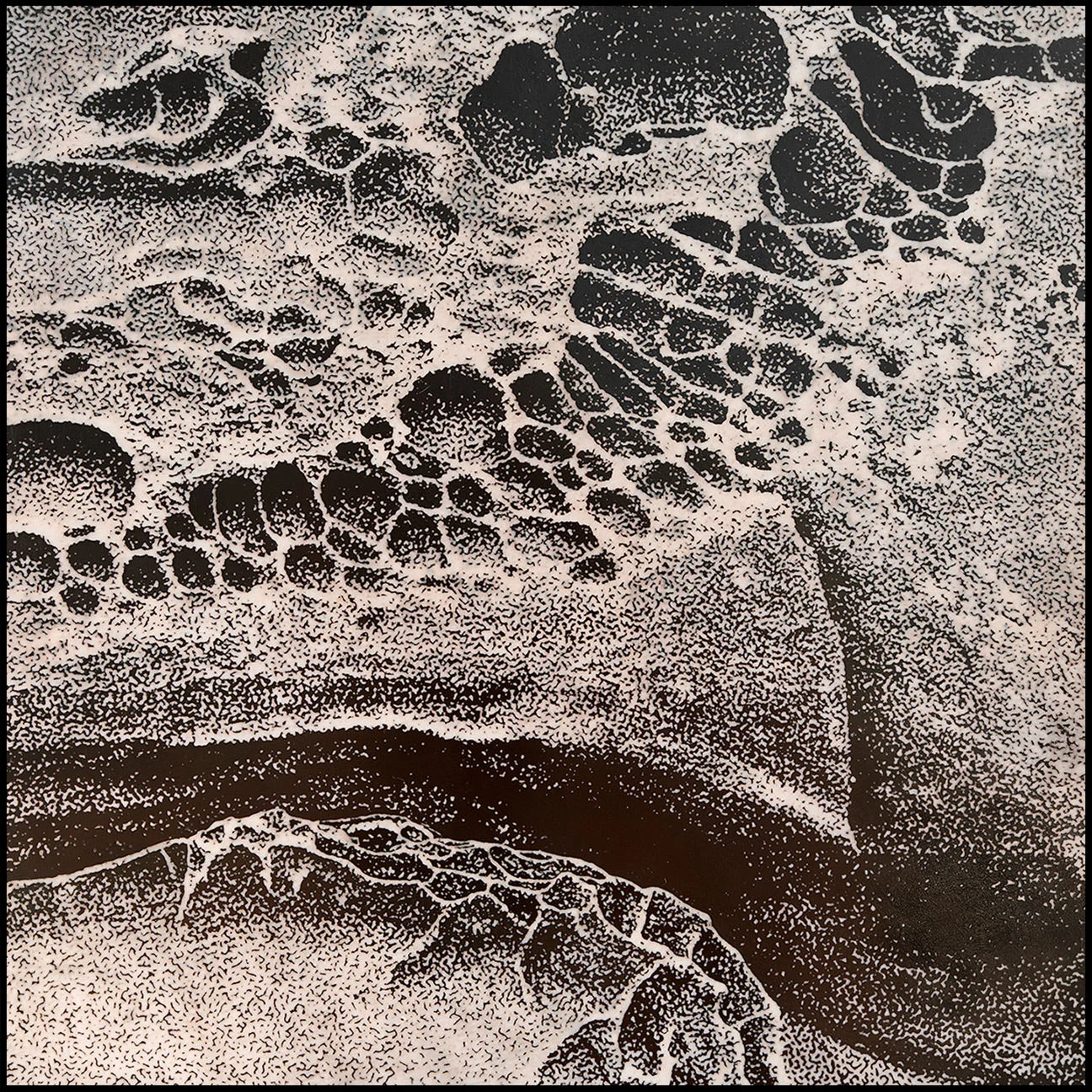In 2020, two pieces from my recent “Salt Point” series were included in “Alchemy 5”, an international enamel exhibit at the Tacoma Glass Museum.
“Salt Point” champlevé (recent)
“Salt Point Tafoni #4”, champlevé enamel on copper, 8” x 8”
Salt Point State Park is located on a remote area of ocean headlands in Northern California. At the ocean’s edge are unusual sandstone formations called “tafoni”. The most interesting ones require a bit of a hike, so I’m often totally alone there, mysterious sculptural rocks on one side, wild surf on the other. When I’m behind the lens of my camera, I’m transported into the “moonscapes” that these formations suggest.
“Salt Point Tafoni #7”, detail
“Salt Point Tafoni #7, champlevé enamel on copper, 8” x 8”
I began photographing Salt Point in 1989, discovering the place by accident. Now I’m drawn to it over and over - my photos number in the thousands. Every visit yields different images as the foggy light or harsh shadows illuminate the tafoni in different ways.
Because etching is either “on or off”, a grayscale image has to be rendered in halftone dots, and the spaces between the dots must be big enough to accept enamel.
“Salt Point Tafoni #5”, champlevé enamel on copper, 8” x 8”
The shadows and gray areas often shift to a different color from the highlights as the copper oxidizes and colors the tiny dots, some as small as .25mm. This can be very subtle, but it determines whether the whites “hold up”, and whether there is a 3-D appearance to the piece.
The color shift depends on the chemical composition of the enamel, firing times and temperatures, and number of firings. This is all part of what I try to manipulate.
Each 8”x8” piece takes about 2 weeks to complete - not including the Photoshop work in the computer. Why do I go to all this trouble to render these photos in glass and copper?! When I began, I wanted to actually embed images in the metal itself, analogous to how translucent quartz is embedded in stone. Like a “fossilized image”. Now I’m captivated by this technique that seems to create a mysterious three dimensional quality when viewed from a few feet away. The images seem to float in a space that is “there and not there”, appearing quite different from an image printed on a paper surface.



